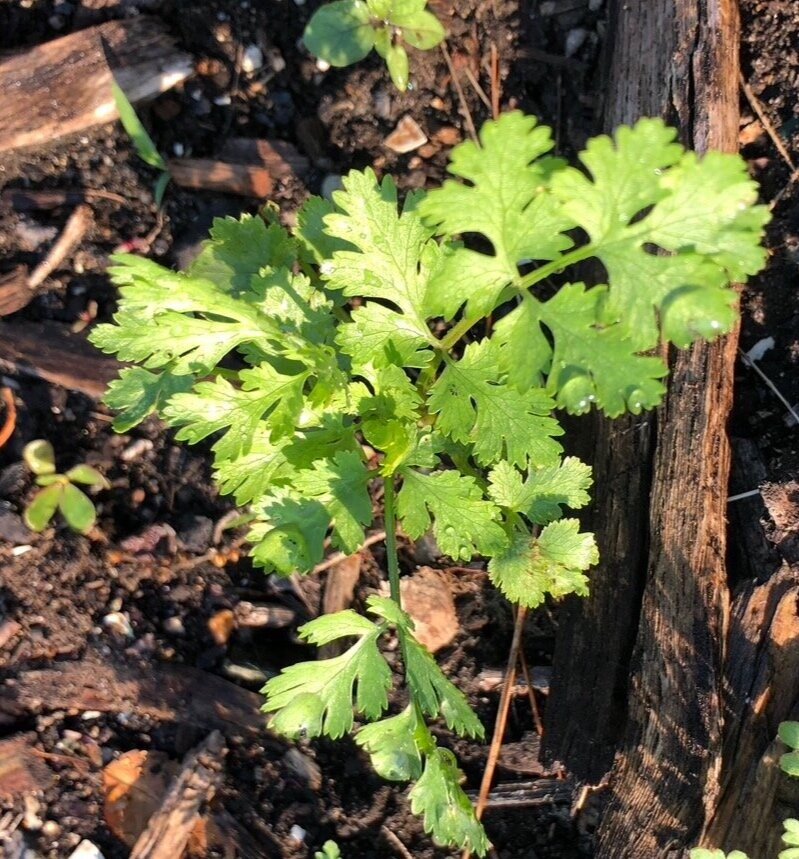Bolting
/Some plants can't take the heat. Cilantro is a plant that does better in cool and moist conditions, so when it becomes too hot for the plant it has a survival mechanism. Bolting is what happens when a plant decides it's time to think about reproduction (seed making) to ensure a new generation survives through the heat. Here are two cilantro plants - one has bolted, the other hasn't yet.
Normal cilantro (which is a volunteer - self-seeded from last year).
Bolted cilantro. Notice that the shape of the leaves has changed - they are much more needle-like as opposed to the normal cilantro which is a little rounder and fuller looking.
Unfortunately, once a plant bolts the taste changes a lot, usually for the worse as it becomes more bitter and tough. However, in some cases the seeds are also edible - cilantro seeds are also called coriander, and can be dried and ground for many styles of flavoring
Other plants that bolt are basil, lettuce, spinach, broccoli, certain herbs and other non-fruiting plants




